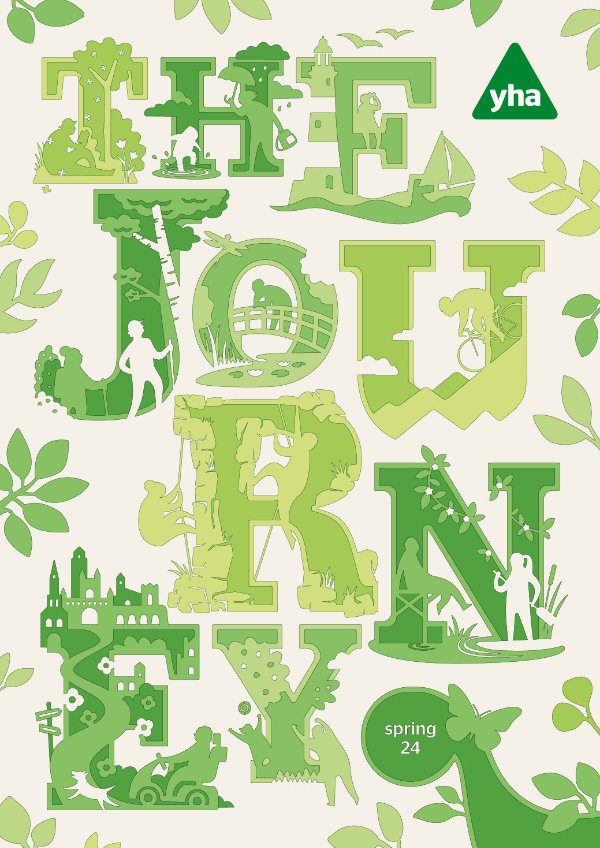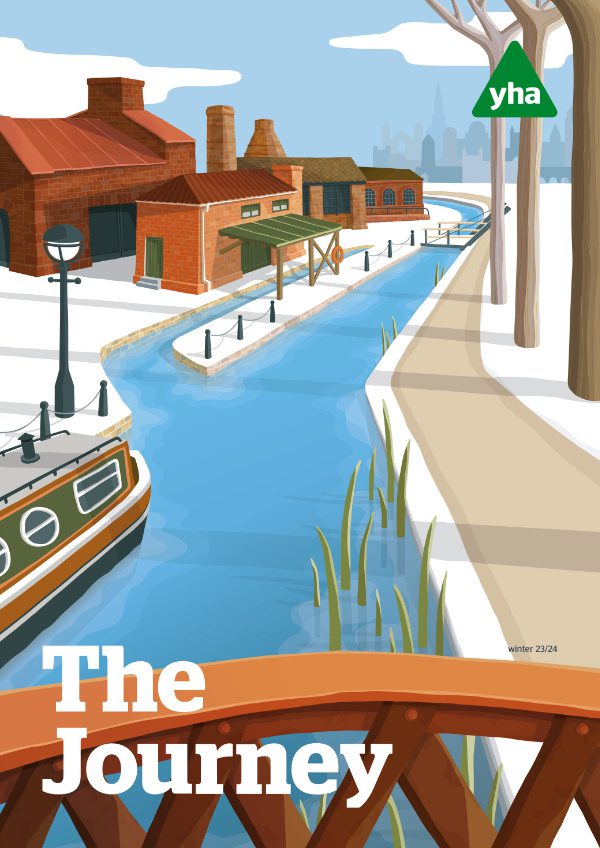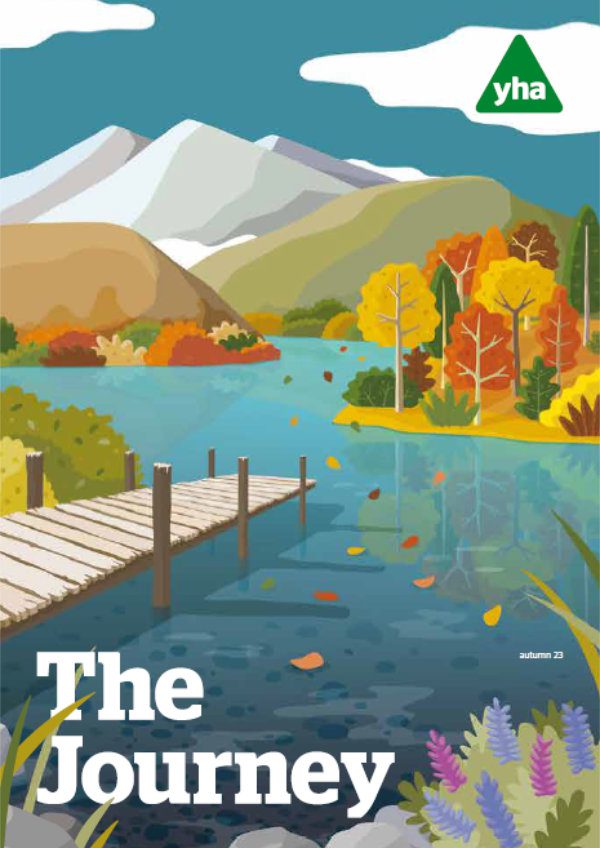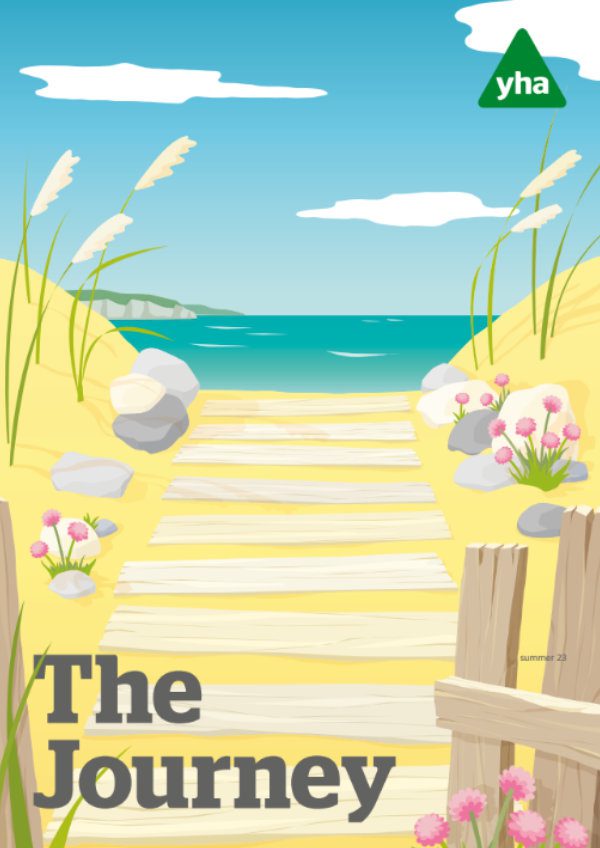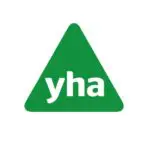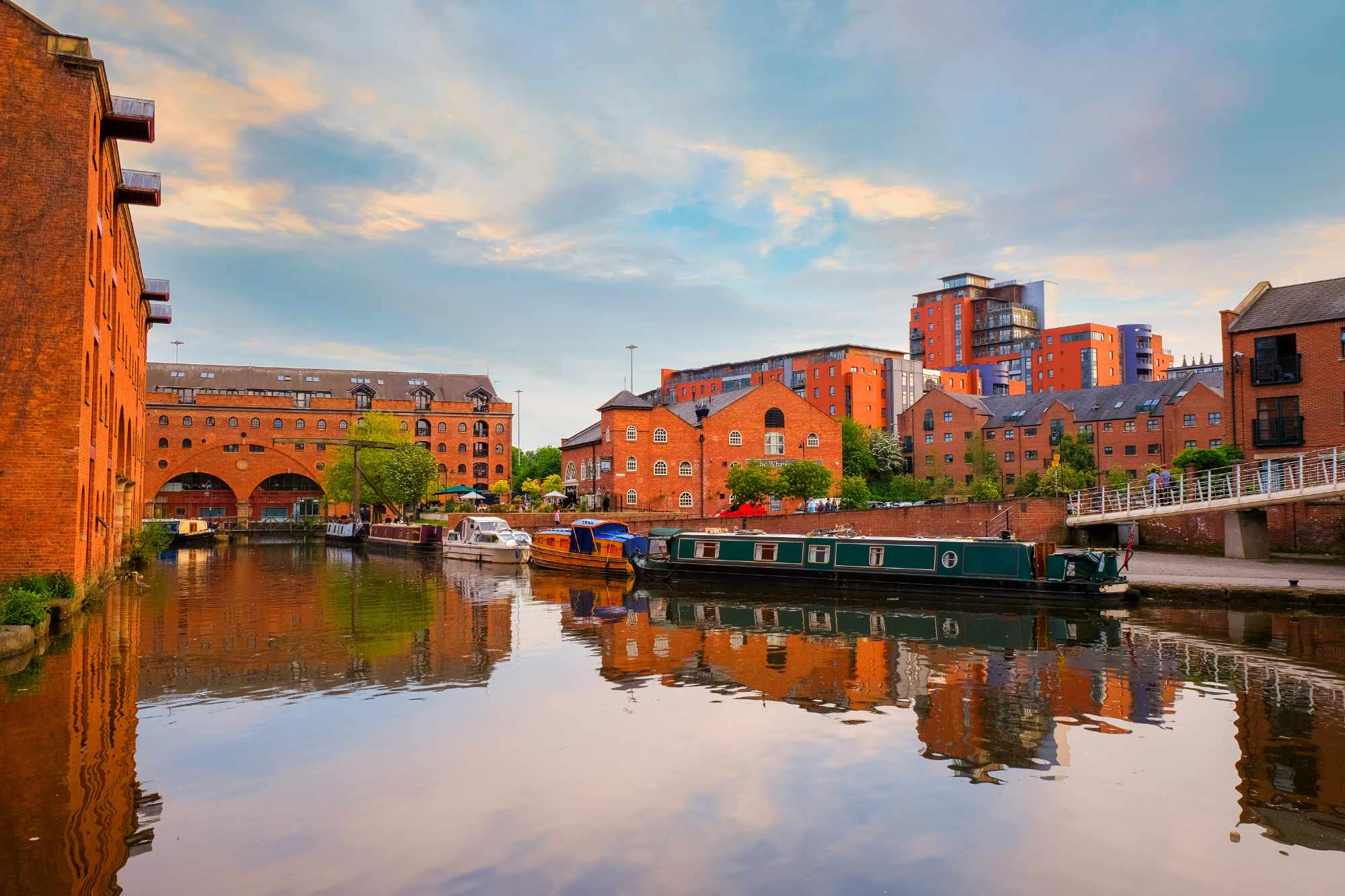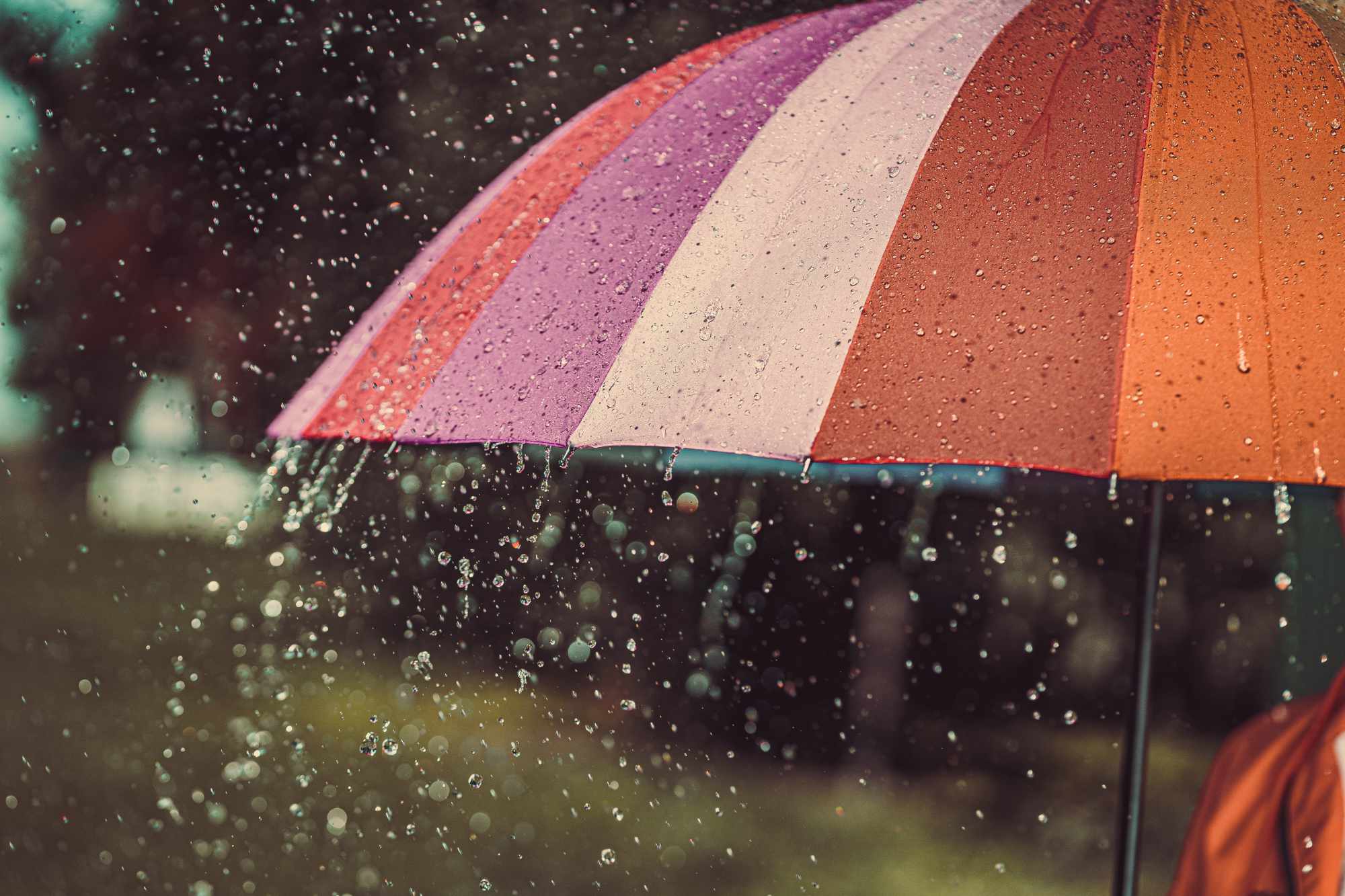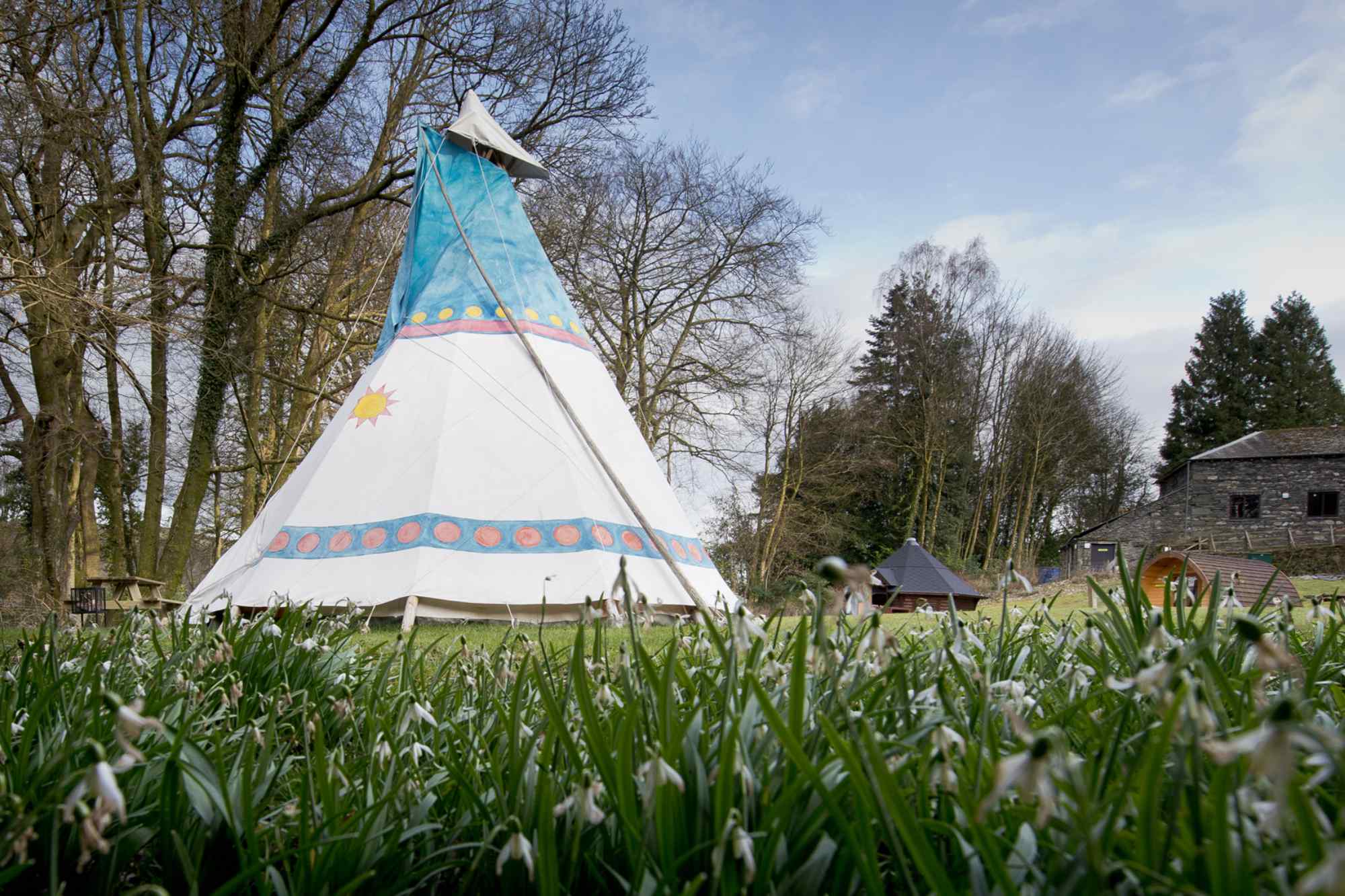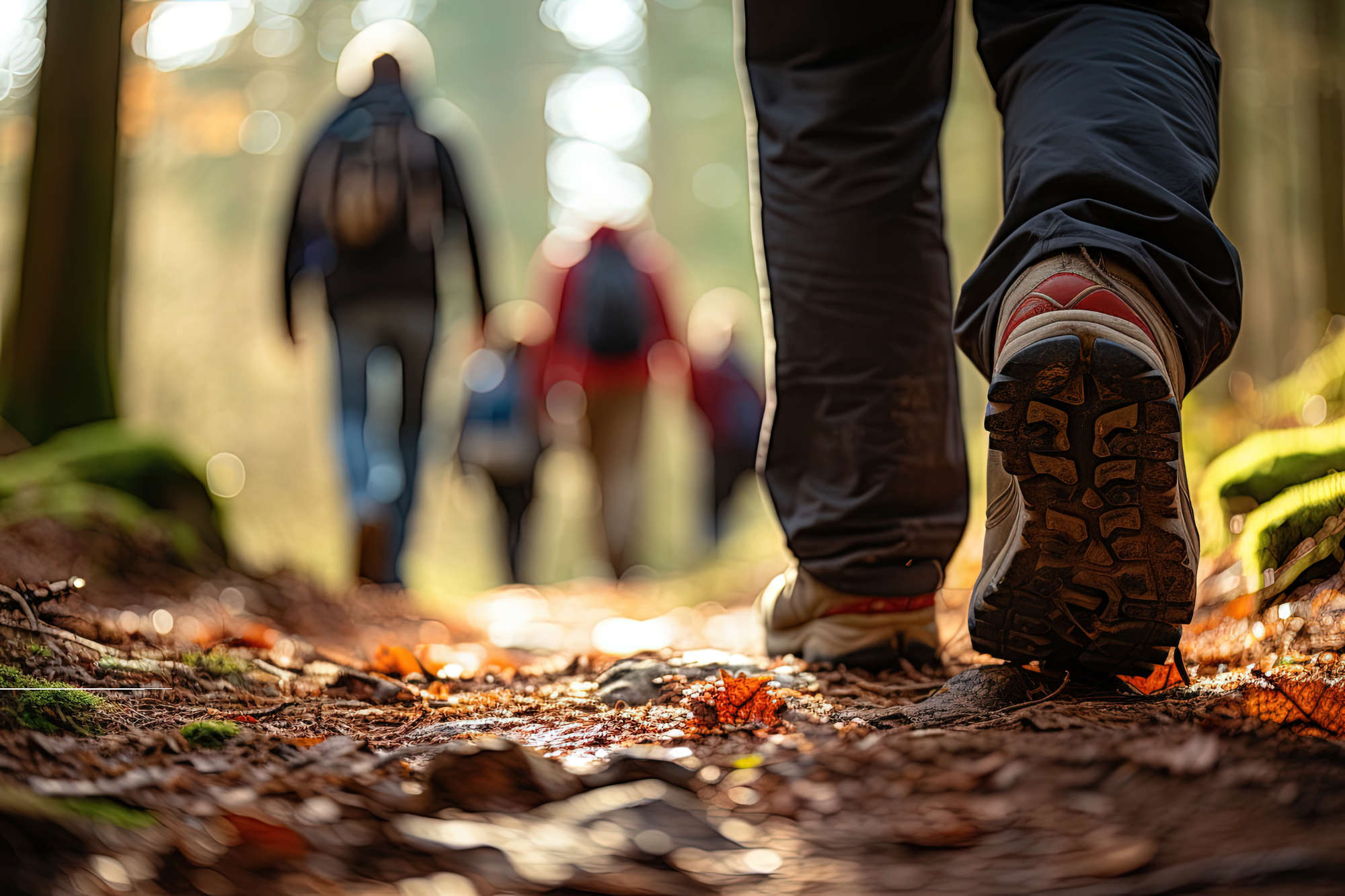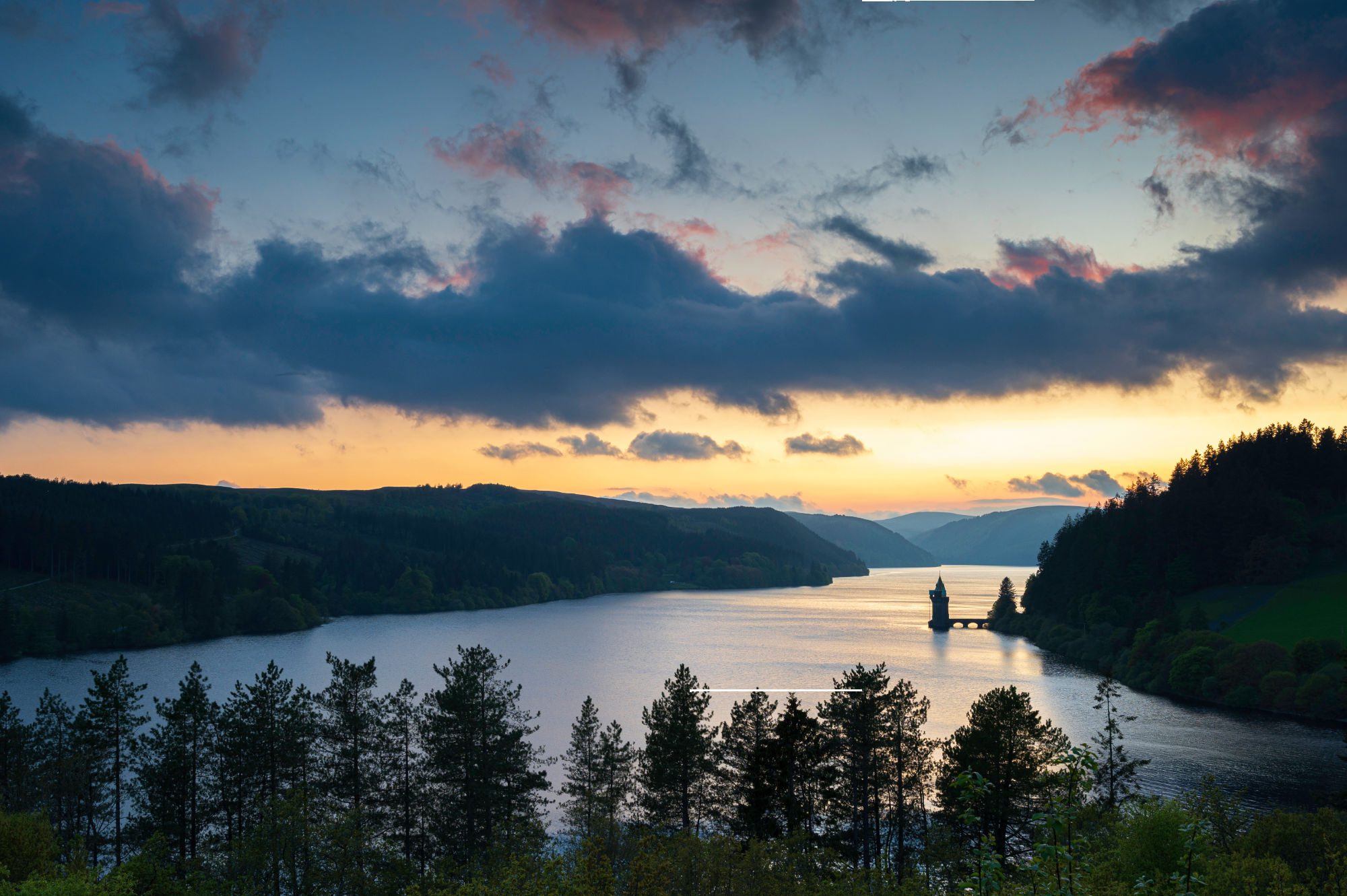Emma Robinson was YHA’s Wales Development Manager until December 2023. She now runs Little Tree Studio and is Wales’ only Bob Ross certified instructor; specialising in teaching landscapes using the oil paint ‘wet on wet’ technique, made famous by Bob Ross and his Joy of Painting TV series.
Here she shares her top tips on how to get started.

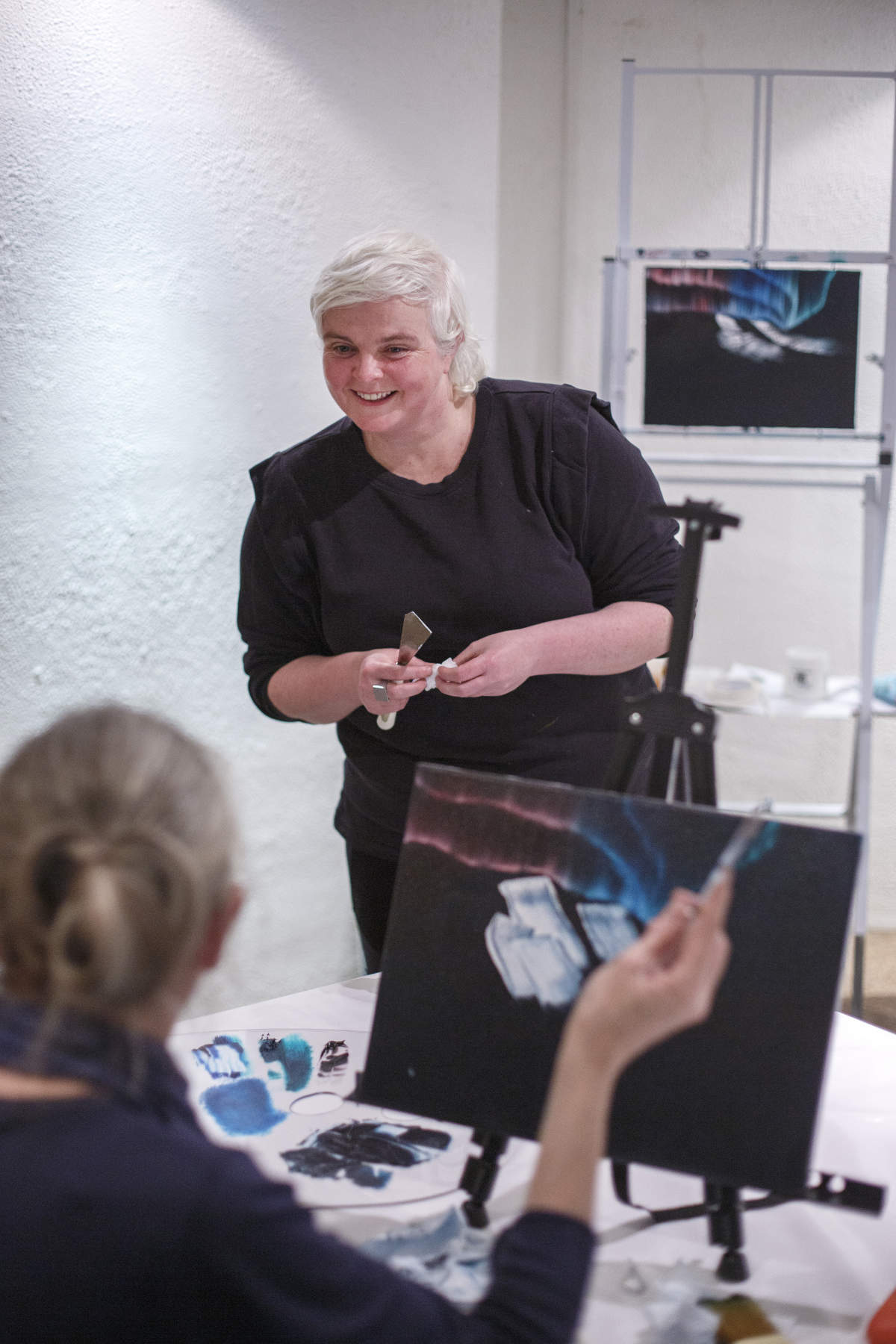
Keep it simple
Try not to get too bogged down in the details. Start with a simple picture or photograph until you build up the confidence to work outside — painting plein air is trickier, as the sun moves across the sky and changes the light before you have time to paint it!
Use large brushes and loose broad brushstrokes to begin with, and cover your canvas with a background colour so you’re not staring at a daunting blank canvas. Use the grid technique — dividing the picture or photo into smaller squares — to help with positioning each element in your composition.
Use a limited colour palette: a white, a black or brown and three other colours, with one for lights, one for mid-tones and one for darks. This allows you to focus on the composition of the landscape and not worry about including every single colour you see.
Find inspiration
Don’t be afraid to copy other styles and try to replicate those you like. Can you paint as thickly as Van Gogh? Can you mimic the light in a Constable? Watch online tutorials, look in reference books, go to classes and soak it all up! You’ll begin to find out what you like and start to develop your own style.
Try other mediums, too: acrylics, oils, watercolour, gouache or a combination of them all. Enjoy getting to know how they react on the canvas, on your brush and on your palette. Don’t worry about the end product, just enjoy the process and give it a go.
Get out and about into landscapes you love. Look around and think about why you like them — what are the elements and conditions that have drawn you to that place? Try and reflect these in your paintings to convey feeling and emotion, like the rush of the waterfall or the movement of the trees.
Slow down
Force yourself to go slowly. Painting demands that you look closely, and really look.
Try to stop your busy brain from leaping to conclusions and forcing you to shortcut the process.
Don’t start with the intention of painting a tree, or a cloud. Instead start to see the landscape and the elements within it as shapes, lines, colours, and tones; start by making those marks on the canvas and the landscape will eventually reveal itself.
Look for contrasts. Where is it really bright? Where are the darkest areas? What does that look like when the two jut up against each other? Pay attention to colour, too. What colour is that cloud? Is it really white or should it be more of a lilac? Use a viewfinder to isolate each area and take your time to work out what the colours and tones really are in front of you.
Practise, practise, practise
Like most things in life, you will get better the more you do it. Make it easier for yourself to put in the practice by having a space set up with your materials or take a small sketchpad and pencils with you on a train journey. If you get frustrated with one painting, move onto something else — you’ll only practise what you enjoy.
Happy painting, y’all.
You can find out more about Emma and her workshops at Little Tree Studio.
